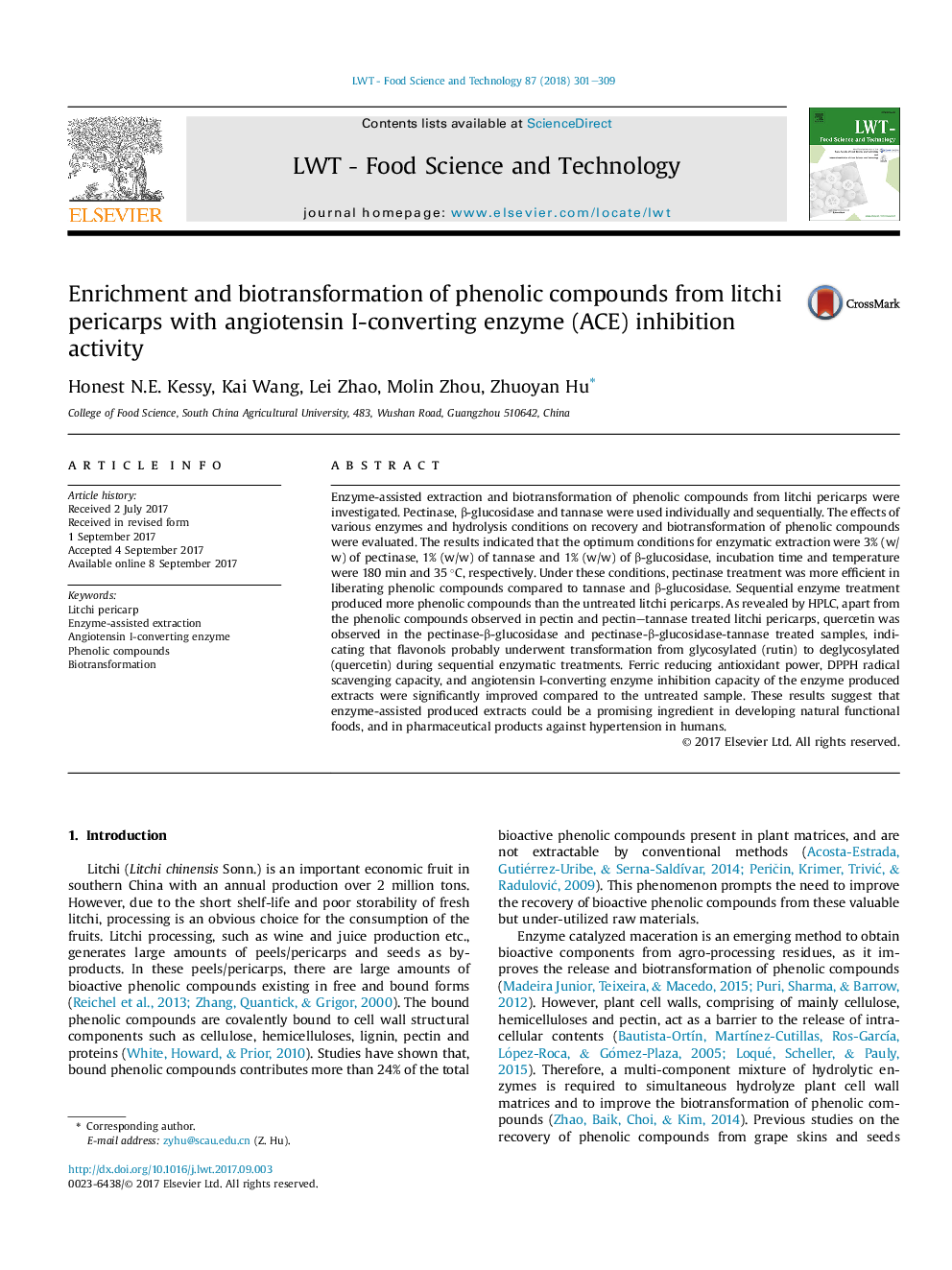| کد مقاله | کد نشریه | سال انتشار | مقاله انگلیسی | نسخه تمام متن |
|---|---|---|---|---|
| 5768620 | 1628512 | 2018 | 9 صفحه PDF | دانلود رایگان |

- Pectinase, β-glucosidase and tannase had positive influences on the release of phenolic compounds from litchi pericarps.
- Sequential enzymatic treatment could improve the extraction and transformation of the phenolic compounds.
- Quercetin was released by sequential enzyme treatment using pectinase-β-glucosidase and pectinase-β-glucosidase-tannase.
- Antioxidant and ACE inhibitory activity of the enzyme treated extracts were enhanced.
Enzyme-assisted extraction and biotransformation of phenolic compounds from litchi pericarps were investigated. Pectinase, β-glucosidase and tannase were used individually and sequentially. The effects of various enzymes and hydrolysis conditions on recovery and biotransformation of phenolic compounds were evaluated. The results indicated that the optimum conditions for enzymatic extraction were 3% (w/w) of pectinase, 1% (w/w) of tannase and 1% (w/w) of β-glucosidase, incubation time and temperature were 180 min and 35 °C, respectively. Under these conditions, pectinase treatment was more efficient in liberating phenolic compounds compared to tannase and β-glucosidase. Sequential enzyme treatment produced more phenolic compounds than the untreated litchi pericarps. As revealed by HPLC, apart from the phenolic compounds observed in pectin and pectin-tannase treated litchi pericarps, quercetin was observed in the pectinase-β-glucosidase and pectinase-β-glucosidase-tannase treated samples, indicating that flavonols probably underwent transformation from glycosylated (rutin) to deglycosylated (quercetin) during sequential enzymatic treatments. Ferric reducing antioxidant power, DPPH radical scavenging capacity, and angiotensin I-converting enzyme inhibition capacity of the enzyme produced extracts were significantly improved compared to the untreated sample. These results suggest that enzyme-assisted produced extracts could be a promising ingredient in developing natural functional foods, and in pharmaceutical products against hypertension in humans.
268
Journal: LWT - Food Science and Technology - Volume 87, January 2018, Pages 301-309